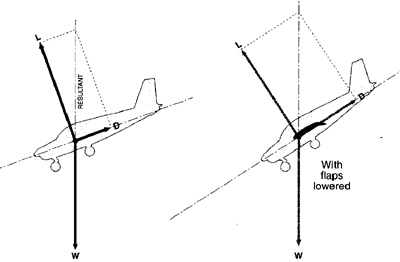How Do Flaps Work?
Flaps change the shape of the wing. When extended, they create more lift but also increase the resultant drag. Flaps permit the aircraft to fly at a lower airspeed and descend at a steeper angle without an increase in airspeed. Flaps are not primary control surfaces and are not used to steer the aircraft.
Flaps extend from the trailing edge of the wing. They increase the curvature, or camber, of the wing, which increases lift. They also hang down, increasing drag. Maximum lift for minimum airspeed can be obtained from a 'nice fat aerofoil' with plenty of top camber. In simple terms the pilot can lower the nose of the aircraft whilst activating the flaps, this will then result in a steeper descending rate without increasing the speed of the aircraft. Although there are different types of flaps they all basically serve the same purpose — to increase lift at low speed. Pilots extend flaps in increments, typically measured in degrees. On most aircraft, flaps move in five- or ten-degree increments through a range of 0 degrees (fully retracted) to about 40 degrees (fully extended). The first few increments add more lift than drag. On many aircraft, extending 5-15 degrees of flaps assists the aircraft in getting airborne.
As the flaps extend beyond about 20 degrees, they add more drag than lift. Flap settings of 20 degrees or more are used for approach and landing.

|